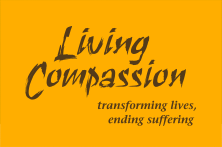When I was told about a seven-step process one of the monks is using to deepen daily practice my response was, “Oh, we must make this available to as many practitioners as we can.” Hence, the following.
The Scenario: There is something it is your responsibility to do. You failed to do it. It could be anything big or small, from not picking up the milk for tomorrow’s breakfast to not picking up the kids from school. It was yours to do and you didn’t do it.
Step 1
As it drops in that you didn’t do it, there’s a moment of “ugh” as you see clearly what happened.
Step 2
You recognize this as an opportunity to bring awareness to a process. Here is a real-life event, and you know real-life events are our best opportunity to see how suffering happens. (If this would not be your experience as “Step 2,” please know it will be as you practice the steps being described.)
Step 3
You choose not to go to a child’s place of feeling bad, of trying to hide what you’ve done, of hoping that no one notices, or of making excuses. You don’t blame someone else or see yourself as a victim.
Step 4
You use the tools of Awareness Practice to explore the process. How did this happen? (You don’t go to conditioned mind to “figure this out.” You stay present and allow conscious compassionate awareness to drop in insights.) Does this kind of thing happen regularly? Do you often forget to do something that it’s your responsibility to do? Again, no “noodling;” just paying attention, trusting Life to inform you.
Step 5
Whether or not you have clarity about how this happens, you look to see what might support you in being successful in the future—all the standards: post-its on the bathroom mirror, the steering wheel; an email, text message, voice mail reminder; recordings that you listen to every day, etc. The essential question you ask to receive insight on is: What is the change in behavior that will allow me to go beyond this process of forgetting to do what I’m responsible for doing? Again, you wait for the clarity of a deep, intuitive understanding to drop in rather than turning to the voices in conditioned mind.
Step 6
You communicate. If someone else is affected by what you’ve done, you let them know and you take responsibility.
Step 7
You make a recommendation to resolve the issue and rectify the situation—if that is appropriate. (I’ll drive to the 24-hour market and pick up the milk. I’ll tell the kids how sorry I am, reassure them of my love, ask for their understanding.)
Without self-hate, without beatings for oneself or blaming of others, it is possible to express that what happened was not intentional. “I didn't mean for it to happen, and I'm working diligently to see it doesn’t happen again.” And taking responsibility for what happened is not the same as believing what happened was a mistake. These situations are how we grow past karma and learn to choose unconditional love and acceptance for ourselves and others.
In a recent email class we were asked these questions:
1) What is the energy of non-resistance, of accepting what is, without trying to control, fix, alter or change it.
2) What does it feel like to experience the storm of identification or the peace of center as simply aspects of the spiritual journey, to eschew avoiding one and craving the other?
3) What is the energy of being open and welcoming to all that Life brings, to be able to receive any aspect of Life “as a gift from the guide beyond.”
This 7-Step process is a marvelous “how to” in our practice of “using everything in our experience to see how we cause ourselves to suffer so we can drop that and end suffering,” a valuable aid in “emptying our cup” in 2016.
In gasshō,
Cheri
